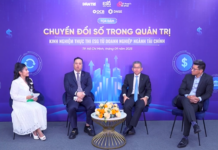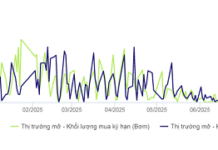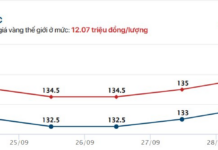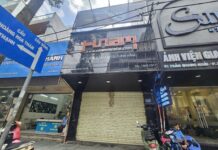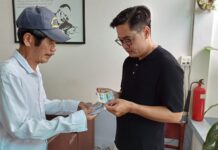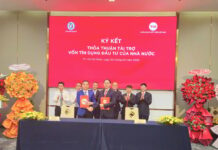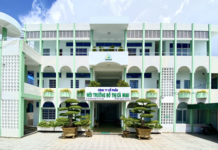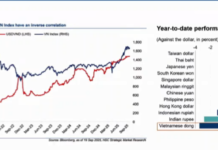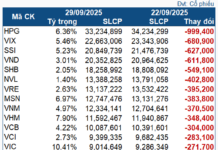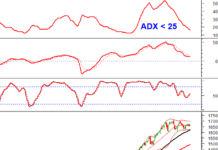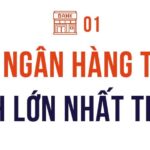
During Vietnam’s 80-year journey of development, the first 30 years were focused on unifying the country. What were the notable economic milestones during this period, in your opinion?
The period from 1945 to 1975 witnessed a divided Vietnam, greatly influenced by the political context of that time. However, when examining the economic aspects, two distinct economic models can be observed between the North and the South.
In North Vietnam, the economy aimed to build a socialist society while ensuring resources for strategic tasks. Given the challenging circumstances and limited infrastructure, agriculture played a dominant role, focusing on ensuring food security for the entire population and the workforce.
The North also received significant support from socialist countries, particularly the Soviet Union and China, in the form of strategic supplies such as steel, cotton, wheat, and petroleum. Several factories and basic infrastructure projects were established during this time, laying the initial foundation for future industrial development.
Meanwhile, South Vietnam followed a market economy model, with major cities like Saigon, Danang, and Nha Trang fostering a class of entrepreneurs and a private system of production, distribution, and trade. Although its development was rather weak and dependent on external aid, especially from the United States, the South gradually formed production, business, and commercial activities.
Despite the numerous fluctuations, the period from 1945 to 1975 witnessed efforts to maintain economic models suitable for each region, with the North building a socialist economy and the South developing a market economy, setting the foundation for post-unification development.

In 1975, Vietnam officially unified the country and faced significant economic challenges. What are your thoughts on Vietnam’s efforts to transform its economy during this time?
Following April 30, 1975, the country was unified, presenting an opportunity for both regions to embark on a new phase of development. However, in reality, Vietnam’s economy continued to face numerous difficulties. This was partly due to the complex political context, which led to Vietnam being placed under economic embargoes for nearly 20 years, from 1975 to 1994. During this time, relations with many major partners, especially Western countries, were frozen, and even relations with some neighboring countries were not favorable.
Amidst these challenges, the centralized planned economy and bureaucratic subsidization led to the eradication of development incentives. The distribution system based on ration coupons and the old growth model failed to create an environment conducive to promoting production and business activities. As a result, the economy fell into a prolonged stagnation, and inflation soared, leading to a struggle to meet basic needs.
However, Vietnam made a decisive shift in its development model. We proactively normalized relations with major countries, especially the United States. Specifically, in 1995, the two countries officially established diplomatic relations, marking a turning point after the US announced the lifting of its economic embargo on Vietnam.

The year 1986 marked a new turning point with the introduction of renewal policies, and Vietnam began its international integration journey. How do you assess this strategic move?
In December 1986, the Sixth National Party Congress made a historic decision to acknowledge the mistakes in the previous development orientation and shift from a centralized planned economy and bureaucratic subsidization to a market economy oriented towards socialism, while opening up to international economic integration.
By 1987, the first Foreign Investment Law was promulgated to attract FDI and create a driving force for economic development. However, it wasn’t until 1990 that the economic situation began to stabilize. Prior to that, inflation had reached alarming levels, with rates soaring to 800-900% per year. In this context, Vietnam implemented drastic measures to curb inflation and restore the economy.
A notable example was the Foreign Investment Forum held in Ho Chi Minh City in 1991, where Vietnam strongly asserted its open-door policy, guaranteeing the legitimate rights of international investors. We amended the Constitution to ensure the protection of legitimate assets, preventing any form of requisition or imposition that would affect the assets of foreign investors. However, we were aware that opening up our economy would invite challenges, but it was necessary for our development!
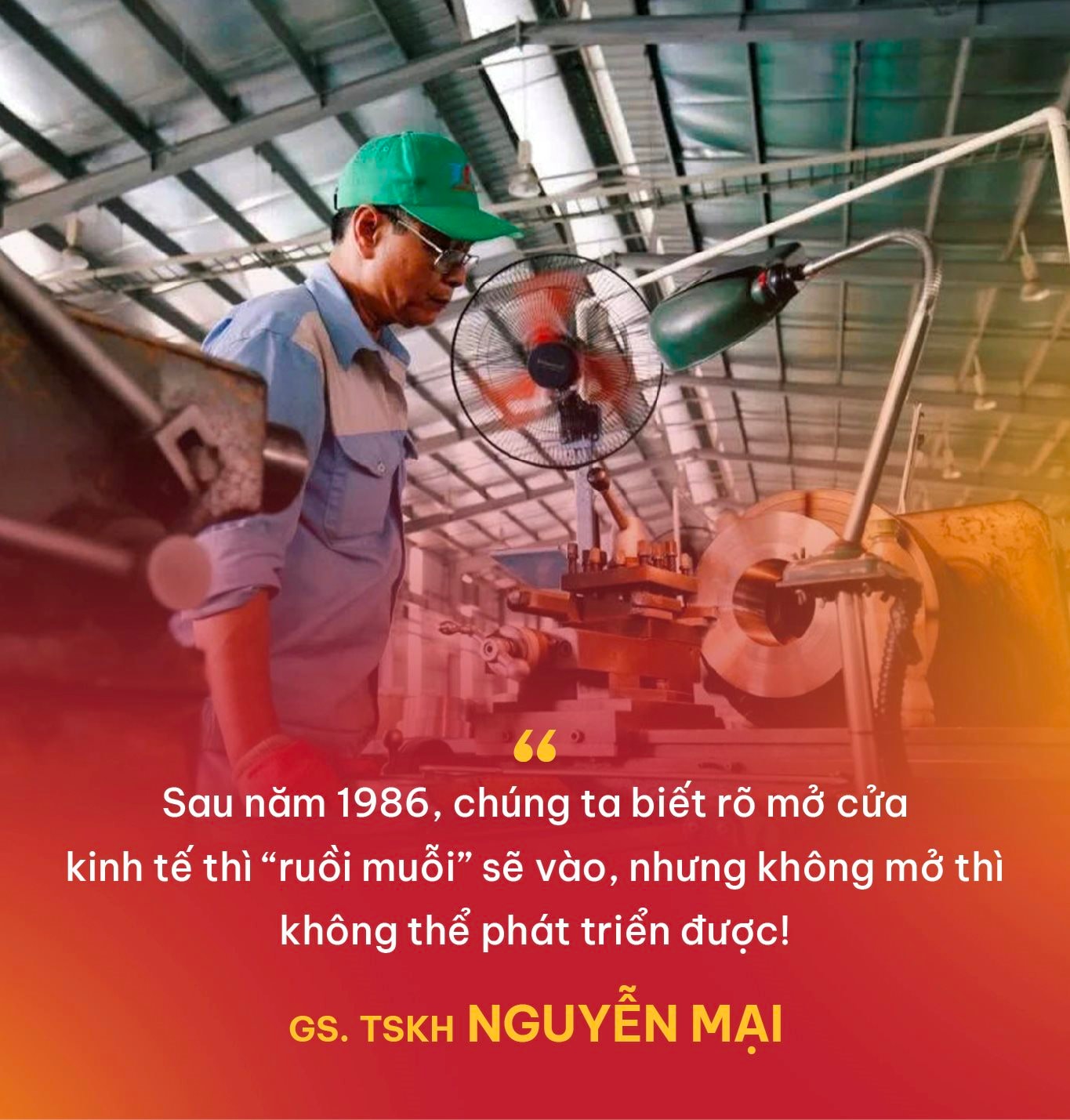
Along with these efforts, to curb inflation, when it reached 9% per month, a special task force proposed applying positive interest rates, where deposit rates were higher than the inflation rate, to attract domestic savings. At that time, as we did not have our own printing press, we had to rely on the Soviet Union for printing and transportation, incurring a cost of about 15%. Therefore, by raising the savings interest rate to 12%, 3% higher than inflation, the government not only avoided printing more money but also strengthened people’s trust in monetary policies while gaining a 3% profit.
As a result, when deposits increased, supply and demand gradually balanced out, causing inflation to drop significantly to 5%, and goods became more abundant, leading to a recovery in production.
It can be said that the period from 1991 to 1997 was a “golden era” for Vietnam’s economy. The economic growth target for the 1991-1995 five-year plan was set at around 5-5.5%, but the actual average growth rate during 1991-1997 reached 8.5%. All indicators in industry, agriculture, and services exceeded the plan. This was the result of strategic and correct moves in renewing thinking and institutions, laying the foundation for sustainable development in later years.
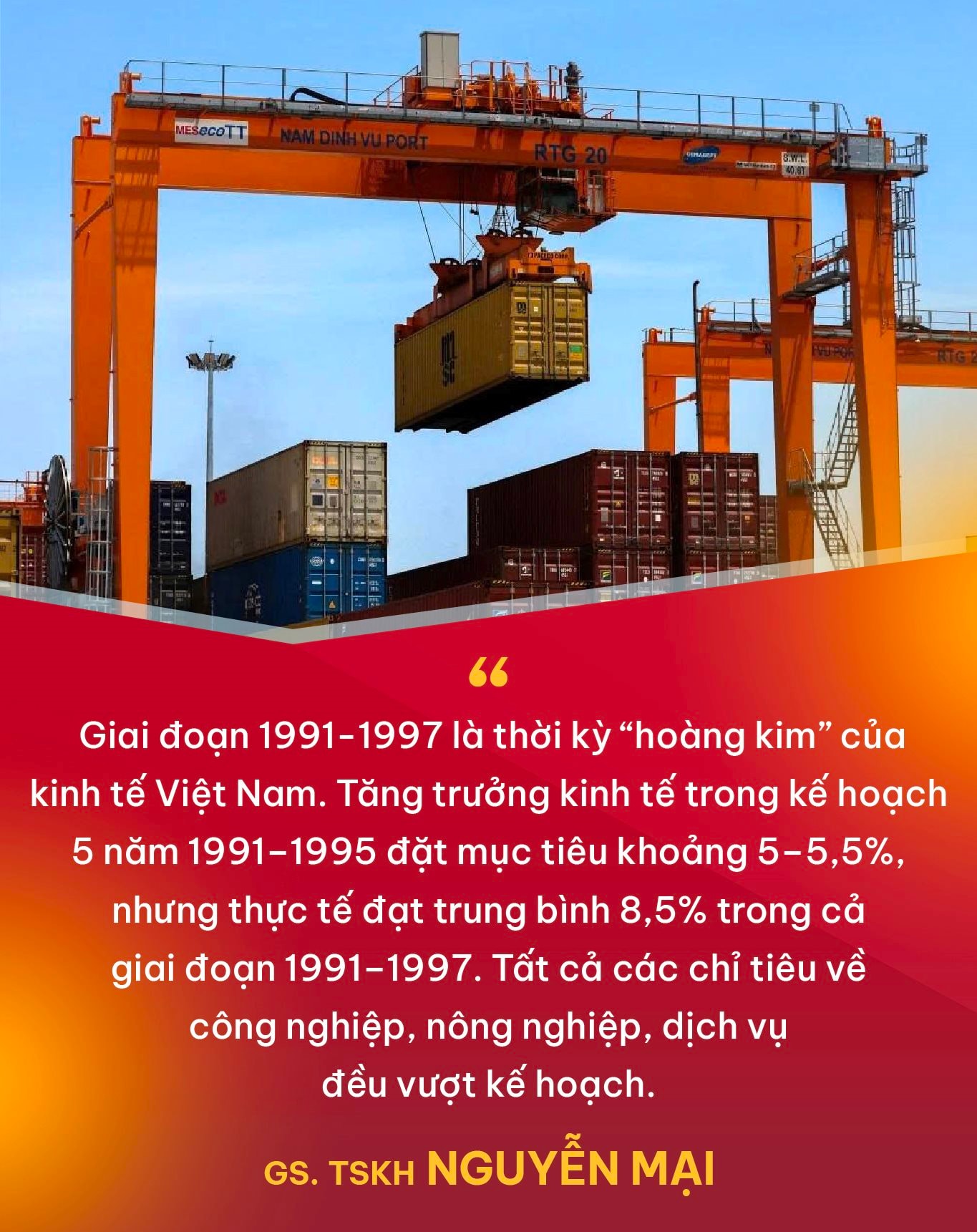
After the golden era, Vietnam faced the 1997-1998 Asian financial crisis and the 2008 global economic crisis. How did our country overcome these challenging periods?
In 1997, the Asian financial crisis originated from Thailand’s decision to float the Baht, causing the exchange rate to soar from 24-25 Baht/USD to over 50-55 Baht/USD. Although Vietnam had not yet opened up its financial market, the spillover effects were inevitable.
From 1998 to 2002, Vietnam’s economy was significantly impacted: exports and imports declined, foreign investment stagnated, and economic growth slowed from the previous average of 8.5% to around 3-4%. By 2005, the economy recovered and returned to growth rates above 8% for three consecutive years.
However, in 2008, the global economy faced another crisis, and Vietnam was not spared. Growth slowed during 2008-2010, forcing us to implement special solutions to cope. A flexible monetary policy was adopted, with savings interest rates adjusted to be higher than the inflation rate but not as high as in the previous anti-inflation period.
Additionally, we implemented measures to save budget expenditures and reduce public investment. The years from 2008 to 2010 were challenging, but thanks to the valuable lessons learned from the previous anti-inflation period, Vietnam weathered the storm, maintained economic and social stability, and created momentum for the following period.

After the renewal period, Vietnam strongly integrated into the global economy, and FDI gradually became the main driver of growth. What are your thoughts on Vietnam’s growth model during this phase?
In reality, we have always considered international economic integration as one of the two important pillars for national development. The first is to develop the domestic economy, especially the business sector, and the second is to promote international economic integration. Integration is built on the principle of mutually beneficial cooperation and efficiency while ensuring the independence and self-reliance of Vietnam’s economy.
Along with this, no country can develop without going through different stages of adaptation. In the early days of opening up, Vietnam was very poor, lacking capital, technology, and skilled labor. Therefore, we had to attract investment in areas with immediate advantages, such as resource exploitation, typically oil and gas, iron and steel, and mining, to accumulate initial capital for development.
Moreover, Vietnam had a significant need for job creation. Each year, millions of people entered the working age, including those discharged from the military, those laid off from state-owned enterprises, and young graduates. Therefore, we proactively prioritized attracting labor-intensive projects in sectors like textiles, footwear, and services. A project with an investment scale of only about 1 million USD could create jobs for 300-400 workers.
In the context of fierce competition for investment attraction with many countries in the region, such as China, Thailand, and Malaysia, Vietnam had to offer attractive incentive policies. However, these policies were still within the framework of strict control to ensure that the State maintained sovereignty and long-term interests.
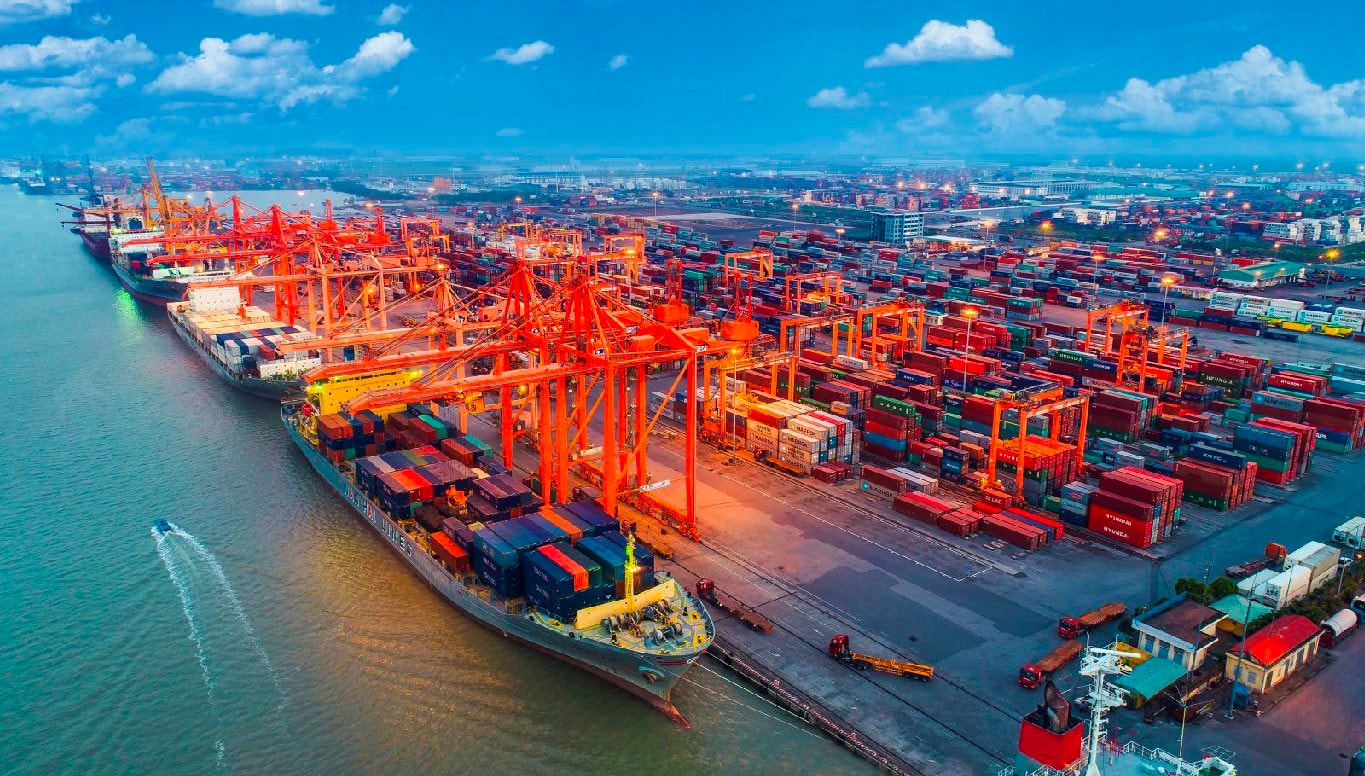
Some argue that Vietnam relies too much on FDI. What is your perspective on this view?
Regarding FDI, many people often provide subjective and incomplete assessments. In reality, in many fields, especially oil and gas, we have cooperated very effectively and beneficially.
For example, in oil and gas exploration and exploitation contracts, the foreign side bears all investment costs and brings in modern technology, mainly for exploration on Vietnam’s continental shelf. Oil and gas exploration is a high-risk process, as 10 to 12 wells need to be drilled to find one commercially viable well, so they invest a lot of money, while Vietnam hardly spends anything.
When a commercial oil field is discovered, the two sides begin to share the products according to the agreed ratio, ensuring that the investor earns a profit of about 12-15%. The remaining part belongs to Vietnam, which can export the crude oil to earn foreign currency for importing machinery, equipment, raw materials, and consumer goods. This is very practical and clear. If no oil is found, we don’t lose anything.
In addition, oil and gas contracts usually have three very important elements. First is training, where large corporations like BP, Statoil, and BSP are required to train Vietnamese experts in their corporations or at leading universities worldwide. Thanks to this, PetroVietnam has built a team of tens of thousands of experts.
Second is technology, many people think that FDI enterprises must transfer technology to us, but that’s not the case! Vietnamese people must be smart enough to learn and gradually master technology through the process of working together. Thanks to this, today, Vietnam’s oil and gas industry can explore in Africa, Venezuela, and even build drilling rigs for foreign countries.
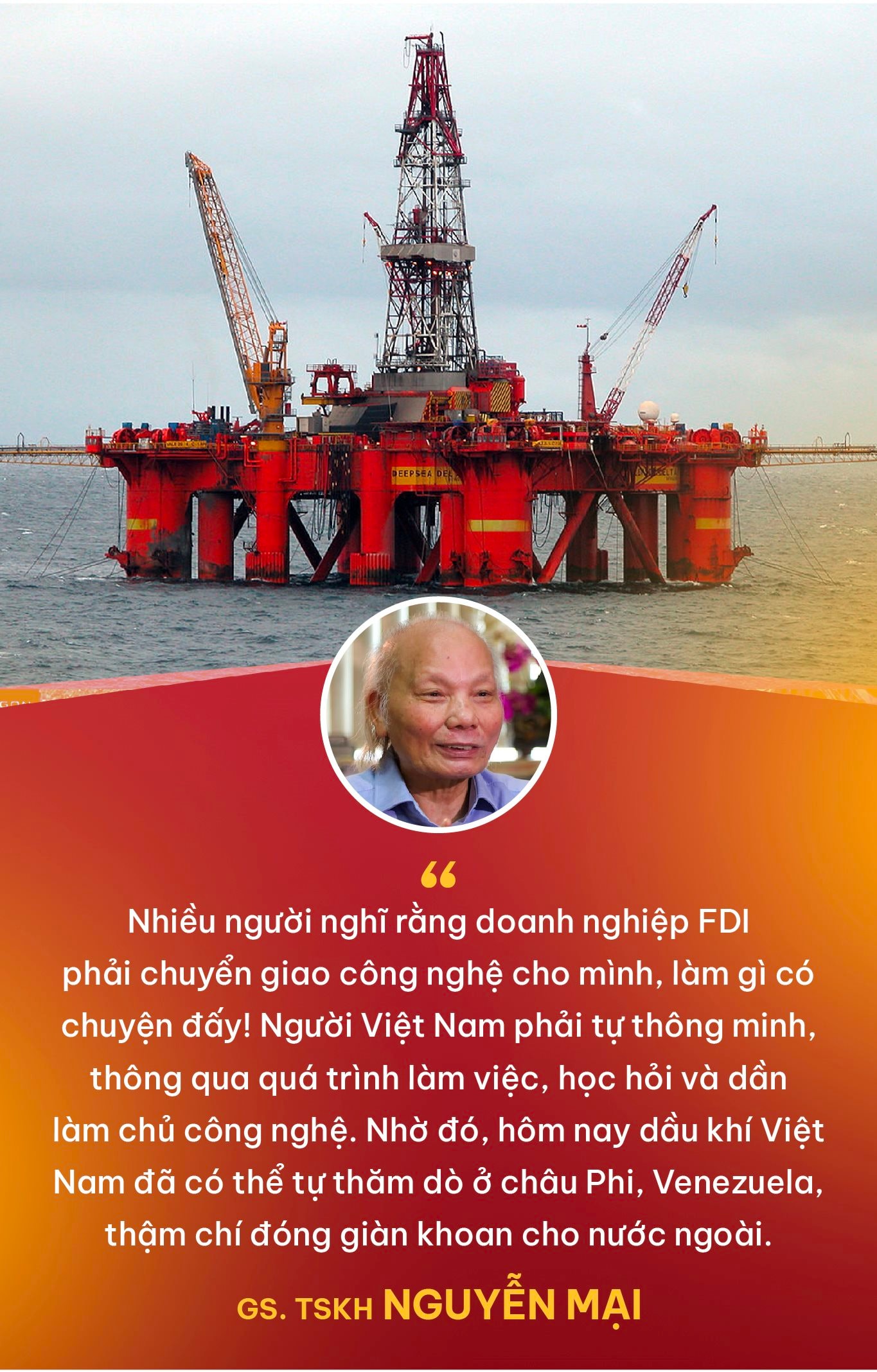
The third element is finance, and during that period, Vietnam lacked foreign currency. Therefore, each oil and gas project included a bonus (cash bonus), with some projects receiving up to 80 million USD. This was a valuable source of capital during difficult times.
Not only in the oil and gas industry but also in the information technology sector, the cooperation between VNPT and Telstra (Australia) from 1991 to 2000, valued at only 10 million USD, brought significant benefits.
First, they helped train human resources, and many current leaders at Viettel, Mobifone, and VNPT grew from this cooperation. Second, they guided us in developing services. Thanks to this, telephone and television prices, which used to be very expensive, are now the cheapest in the region. Currently, Vietnam has more than 130 million smartphone subscribers, universal computerization for students, and 5G coverage even in remote areas.

In the current context, how should Vietnam’s growth model evolve?
Vietnam has made a strong shift from an agricultural economy to an industrial and service-based economy. Foreign investment has not only contributed to economic growth and structural transformation but, more importantly, has created conditions for Vietnamese people to accumulate capital, along with remittances, to form tens of thousands of enterprises.
If, in the past, most large projects, from bridges and roads to industrial parks, relied on foreign capital and technology, now many domestic enterprises have mastered these fields. Groups like Vingroup, Sun Group, and Hoa Phat have the capacity to construct and operate such projects. Therefore, we should not deny the role of FDI but need to shift towards a new growth model by focusing on domestic enterprises in a timely manner.
Moreover, large corporations like Viettel, EVN, and PVN have expanded their operations globally. Private groups like Vingroup have invested in the US and developed modern technologies for electric cars and buses while organizing the VinFuture international science award, valued at 5-6 million USD annually, which is likened to Vietnam’s Nobel Prize.
Therefore, we have clearly defined our development strategy: accelerate strongly, improve production and business efficiency, and invest more effectively. We not only focus on domestic investment but also continue to selectively attract foreign investment. From focusing on FDI from Asia, we now aim for large corporations from Europe, the US, and high-tech and modern fields.
Furthermore, we have oriented development strategies according to different regions. In major centers like Hanoi, Ho Chi Minh City, Danang, Hai Phong, Nha Trang, and Can Tho, there should be a rapid shift towards high-tech industries, AI, semiconductors, and modern financial models, as well as open market models. Developing localities can combine domestic and foreign investment attraction.
For mountainous and remote areas, the focus should be on investing in transportation infrastructure, information technology, and human resources development to gradually transform the economic structure and bring goods to the domestic and international markets.
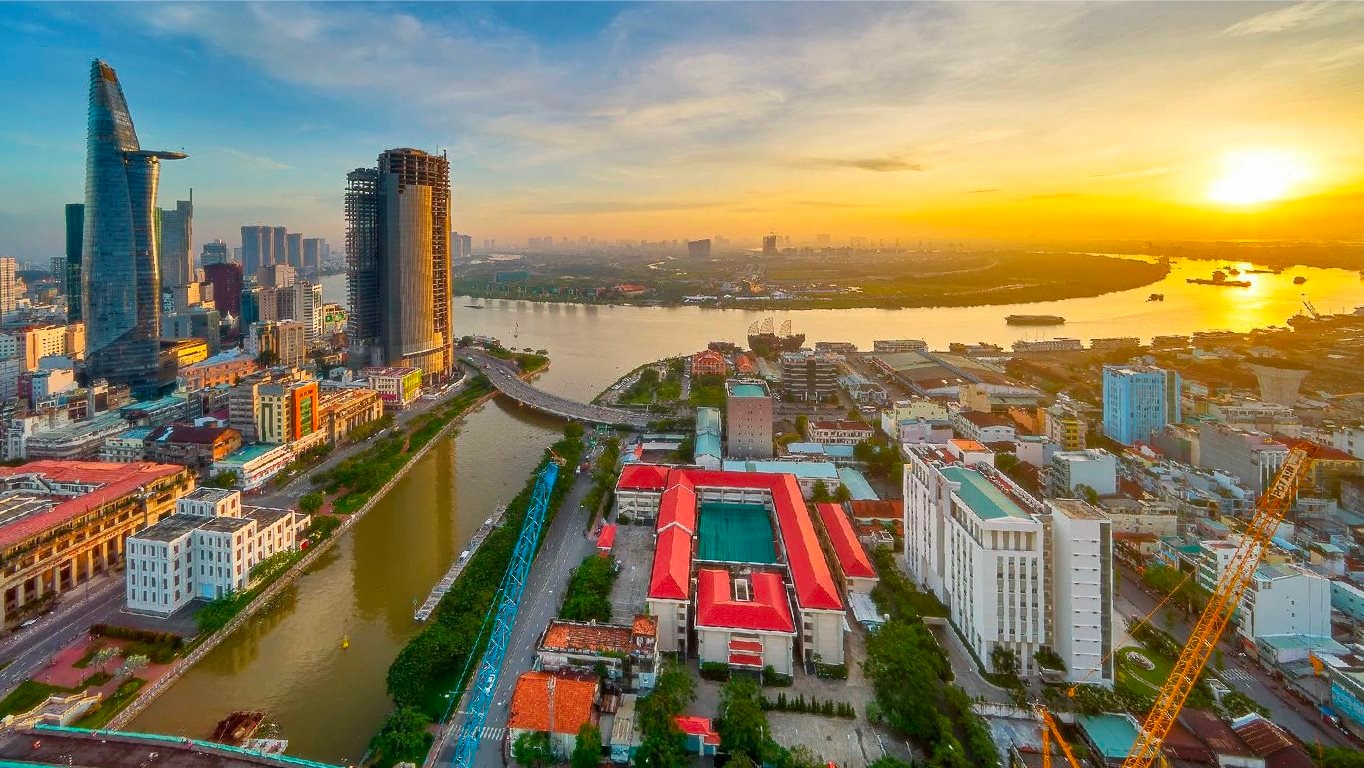
Vietnam aims for double-digit growth in the coming period. In your opinion, what factors will determine the success of this goal?
I believe that achieving double-digit growth is very challenging but not impossible. To realize this goal, one of the critical factors is not only fighting corruption but also resolutely combating wastefulness.
Recently, we have started the digital transformation process, applying electronic technology to administrative procedures. In the tax sector, for example, the
Unveiling Vietnam’s Top 20 Private Banks: A Financial Deep Dive
In 2024, the combined budget submissions of the top 20 private banks reached an impressive VND 47,312 billion, reflecting a significant increase of nearly 13% from 2023 and a remarkable surge of 150% compared to 2022.
“Inspiring Businesses to Soar: The Made by Vietnam Forum Advantage.”
On August 8, 2025, at the Ho Chi Minh City Television Theater, the Plenary Session of the ‘Made by Vietnam’ event – honoring Vietnamese brands organized by Ho Chi Minh City Television – brought together leaders, experts, and enterprises to discuss solutions to help the business community thrive in this new era.
The Greener Industrial Park: Unveiling the $126 Million Transformation in Tay Ninh
On the morning of August 9, the People’s Committee of Tay Ninh Province inaugurated the Infrastructure Investment Project for Thu Thua Industrial Park. This is the first new industrial park project in Tay Ninh Province since the merger of Long An and Tay Ninh, marking an important step in the local industrial development strategy for the gateway connecting the Eastern and Western regions of Southern Vietnam.






